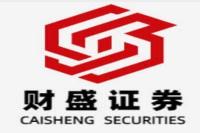LME Metals Update: Copper Takes a Dip, Tin Shines Bright
Meta Description: Dive into the latest LME metal futures closing prices, with insightful analysis of copper's decline, tin's surge, and other key trends shaping the metals market.
The London Metal Exchange (LME) saw a mixed bag of results for its key metals futures contracts this week, as the market navigated a complex landscape of global economic uncertainties, supply chain disruptions, and shifting demand dynamics. While copper, aluminum, zinc, and nickel all ended the day in the red, tin stood out as a bright spot, soaring to new highs. Let's delve into the details of each metal's performance, shedding light on the factors driving these price fluctuations.
Copper: The Red Metal Takes a Tumble
Copper took a significant hit, closing down $159 per ton at $8770 per ton. This downturn can be attributed to several factors, including:
- Slowing global economic growth: Fears of a potential recession are weighing heavily on the copper market, as demand from major consumers like China is expected to weaken.
- Elevated inventory levels: Increased production and a slowdown in demand have led to higher inventory levels, putting pressure on prices.
- Uncertainty surrounding the US-China trade relationship: The ongoing trade tensions between the two economic powerhouses contribute to market volatility and investor caution.
Despite these challenges, copper remains a key metal for the global economy, and its long-term prospects remain positive. Factors like the growth of renewable energy and electric vehicles are expected to drive demand for copper in the coming years, potentially offsetting the current headwinds.
Aluminum: A Modest Dip for the Lightweight Metal
Aluminum closed down $8 per ton at $2288 per ton, indicating a minor decline. However, the metal's performance should be viewed within the broader context of its recent resilience.
- Supply disruptions: Challenges in the aluminum market, including energy shortages and sanctions on Russian producers, have contributed to a tight supply situation, which has helped to support prices.
- Demand from the automotive sector: The ongoing shift towards electric vehicles is boosting demand for aluminum, a key material in battery production and lightweight vehicle components.
While the aluminum market is likely to face headwinds from the slowdown in global economic activity, its long-term outlook remains promising, driven by the growing demand for sustainable and lightweight materials.
Zinc: A Dip Amidst a Sea of Concerns
Zinc closed down $20 per ton at $2582 per ton, reflecting concerns about slowing demand and rising inventory levels.
- Global economic slowdown: The potential for a global recession is casting a shadow over the zinc market, as industrial activity is expected to slow, leading to lower demand for the metal.
- Elevated zinc stocks: Increased production and a slowdown in demand have led to a build-up of zinc inventories, putting downward pressure on prices.
Despite these challenges, zinc remains a key metal for the construction and manufacturing industries, and its long-term fundamentals remain solid. The growth of infrastructure projects and the increasing use of zinc in galvanizing and other applications offer potential for future growth.
Lead: A Positive Outlier in a Mixed Market
Lead closed up $14 per ton at $1968 per ton, bucking the downtrend seen in other metals. This surge can be attributed to:
- Strong demand from battery manufacturers: The growing demand for lead-acid batteries used in automotive and other applications is providing a strong tailwind for lead prices.
- Supply disruptions: Challenges in the lead market, including supply chain disruptions and environmental regulations, have contributed to a tight supply situation, supporting prices.
Despite its recent strength, lead faces challenges from the transition to electric vehicles, which rely less on lead-acid batteries. However, the metal's use in other applications, such as construction and cable sheathing, offers potential for continued growth.
Nickel: A Fall from Grace
Nickel closed down $89 per ton at $16296 per ton, marking a significant decline. This drop can be attributed to:
- Concerns over Chinese demand: A slowdown in China's economic growth is raising concerns about demand for nickel, which is primarily used in stainless steel production.
- Increased supply from Indonesia: Indonesia, a major nickel producer, has ramped up production, adding to the supply overhang in the market.
Despite the recent downturn, nickel remains a key metal for the electric vehicle industry, as it is a crucial component in lithium-ion batteries. The growing demand for electric vehicles is expected to provide a long-term support for nickel prices.
Tin: The Shining Star of the LME
Tin closed up $340 per ton at $29991 per ton, marking a significant surge and reaching new highs. This strong performance can be attributed to:
- Tight supply: Tin production is constrained by limited mining operations and environmental regulations, contributing to a tight supply situation.
- Strong demand from electronics manufacturers: The growing demand for tin in electronics, particularly in soldering applications, is bolstering prices.
While the tin market faces challenges from the use of substitutes and the potential for recycling, its strong fundamentals, driven by the growth in the electronics industry, suggest that tin prices are likely to remain elevated in the near term.
Cobalt: A Day of Stagnation
Cobalt closed flat at $26500 per ton, showing little movement. This relative stability can be attributed to a delicate balance of supply and demand factors.
- Supply concerns: Cobalt production is concentrated in a few countries, primarily in the Democratic Republic of Congo, which can lead to supply disruptions and price volatility.
- Growing demand from the electric vehicle industry: Cobalt is a key component in lithium-ion batteries, and the growing demand for electric vehicles is contributing to a rise in cobalt prices.
The long-term outlook for cobalt remains uncertain, as the industry faces ethical and environmental concerns, as well as the potential for substitutes. However, the continued growth of the electric vehicle industry is likely to keep the metal in high demand for the foreseeable future.
Navigating the Metals Market: Insights and Considerations
The LME metal futures market is a complex and dynamic landscape, influenced by a myriad of factors, including:
- Global economic growth: The overall health of the global economy plays a significant role in determining demand for metals.
- Government policies: Government policies, including trade regulations, environmental regulations, and subsidies, can impact metal prices.
- Technological advancements: Advances in technology, such as the development of new battery technologies and the adoption of renewable energy, can create new demand for metals.
Investors and industry players need to carefully monitor these factors and develop informed strategies to navigate the complexities of the metals market.
What Does the Future Hold?
While the current market outlook is characterized by uncertainty and volatility, the long-term fundamentals for most metals remain positive. The growth of the electric vehicle industry, the expansion of renewable energy infrastructure, and the increasing demand for sustainable materials are expected to drive demand for key metals in the coming years. However, investors and industry players must be prepared for potential disruptions and volatility in the market.
Frequently Asked Questions (FAQs)
Q: What is the LME?
A: The London Metal Exchange (LME) is the world's leading market for industrial metals. It provides a platform for trading futures contracts on a wide range of metals, including copper, aluminum, zinc, lead, nickel, tin, and cobalt.
Q: What are metal futures contracts?
A: Metal futures contracts are agreements to buy or sell a specific quantity of a metal at a predetermined price on a future date. They allow investors to speculate on price movements and hedge against price fluctuations.
Q: What factors influence metal prices?
**A: ** Metal prices are influenced by a complex interplay of economic, political, and technological factors, including:
- Global economic growth
- Government policies
- Supply and demand dynamics
- Technological advancements
- Environmental regulations
- Currency fluctuations
Q: How can I invest in metals?
A: There are several ways to invest in metals, including:
- Metal futures contracts: These contracts allow you to speculate on price movements in the metals market.
- Exchange-traded funds (ETFs): ETFs track the performance of a basket of metals and are traded on stock exchanges.
- Physical metals: You can purchase physical gold, silver, and other metals, either in bullion form or as coins.
Q: What are the risks associated with investing in metals?
A: Investing in metals comes with inherent risks, including:
- Price volatility: Metal prices can fluctuate significantly, resulting in potential losses.
- Storage costs: Storing physical metals can be expensive, particularly for larger quantities.
- Counterparty risk: When investing in futures contracts, you are exposed to the risk that the counterparty to the contract may default.
Q: What are the key factors to consider when investing in metals?
A: When investing in metals, it's essential to consider:
- Your investment goals and risk tolerance: Determine your investment objectives and how much risk you are willing to take.
- Market trends: Stay informed about current market trends and economic indicators.
- Diversification: Diversify your portfolio to reduce risk.
- Storage costs: Consider the cost of storing physical metals.
- Fees and commissions: Be aware of fees and commissions associated with different investment options.
Conclusion
The LME metals market is in a state of flux, with ongoing uncertainty and volatility. While the long-term outlook for many metals remains positive, driven by factors like the growth of the electric vehicle industry and the demand for sustainable materials, investors and industry players must be prepared for potential disruptions and price swings. By carefully analyzing market trends, understanding the key drivers of metal prices, and developing informed strategies, participants can navigate the complexities of the metals market and position themselves for success.



